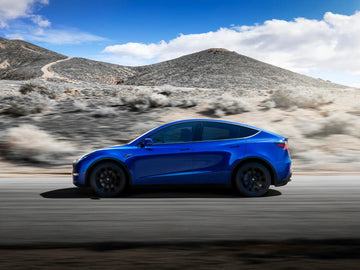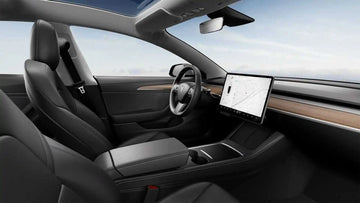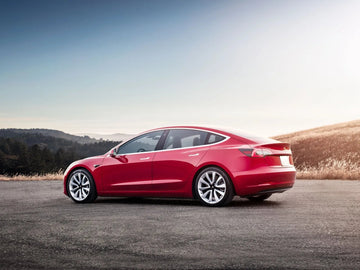Tesla is considering expanding the current Tesla FSD Beta test population from 0.1 million to 1 million by the end of the year, giving Tesla a greater chance of achieving true self-driving. On May 17, local time in the United States, Tesla CEO Musk said at the All in Sumit technology conference: "There are currently about 100,000 car owners participating in the Tesla FSD Beta test, so the scale is not small. But by the end of this year , we will expand the number of testing to about 1 million people."
The Tesla FSD Beta was released as early as October 2020 and is currently being rolled out in the United States and Canada. Only car owners who have installed Tesla's FSD driver assistance system can join the FSD Beta program and need to achieve the corresponding safety score. In February of this year, Tesla began pushing the FSD Beta to Canadian car owners.
Tesla is accelerating and ramping up the number of tests this year. As of the end of last year, Tesla had 60,000 vehicles open to FSD Beta, and after relaxing the safety score standard, the number of U.S. car owners who got Tesla FSD Beta open in the first quarter of this year quickly increased from 40,000 to 100,000.
Currently, car owners can join the Tesla FSD Beta test program via the "Request" button on the dashboard screen. The FSD package is priced at $12,000 in the U.S. or a monthly subscription price of $199, and the latest in Canada is $12,800, and there’s no word yet that FSD Beta owners will need to pay extra.

The number of North American optional users may reach one million by the end of the year
Snowball user "Jiang Hanzhe" said that the data shows that Tesla's FSD optional users in North America will be between 500,000 and 700,000 by the end of the year. version of automatic assisted driving function) to FSD and subscribers, the total should be 1 million. According to data from Good Car Bad Car, an American auto sales research institute, as of March, Tesla had more than 1.39 million vehicles in the United States. The test expansion means that the FSD Beta will be open to everyone in North America who has installed an FSD. Then push it according to the safety score. Tesla FSD Beta can be summarized as a series of new features that have not yet been debugged, the most important of which is "autonomous driving on city streets, in a sense, the main purpose of testing is to help users complete safer autonomous driving actions.
Currently, FSD Beta is only available in markets such as the US and Canada
According to public information, Tesla FSD Beta (Full Self-Driving Beta) was released as early as October 2020 and was the first to be promoted in the U.S. market. The version has been updated dozens of times so far. At the end of 2021, Tesla has 60,000 vehicles open to FSD Beta, accounting for 40% of Tesla's paying FSD owners in North America. It is reported that if car owners want to obtain the right to open the FSD Beta, they need to have good safe driving habits and get a high score under the Tesla safety score tool. In order to speed up the popularity of FSD Beta, Tesla lowered the safety score standard, so that in the first quarter of 2022, its car owners who opened FSD Beta rapidly increased by 40,000.
Earlier, Musk said that more extensive testing will be carried out among all self-driving customers in North America in 2022. At present, Tesla FSD Beta is only pushed in markets such as the United States and Canada, and there is no open plan for FSD Beta in the Chinese market. Due to the delay of function push and other reasons, the FSD optional in China can only realize some basic functions, such as high-speed assisted navigation and driving, summoning, and automatic parking.

The value of test miles soaring
At the January 2021 financial report data conference call, Musk said that FSD will become Tesla’s largest source of revenue in the future, and that this year’s FSD subscriptions may usher in a breakthrough. In the current limited data, the financial report for the third quarter of 2021 shows that the current service revenue including Tesla FSD is 894 million US dollars. Musk once said that "the final price of FSD may exceed $100,000." It seems to be approaching.
For users, participating in the test can experience the latest version of FSD. According to Musk, the update frequency of FSD Beta is about once every two weeks, and the next version is v10.12. Since v10.2, the radar is officially turned off and only the pure vision system is used. Musk believes that humans drive through eyes and biological neural networks, and that cameras and chip-based neural networks are the only way to achieve universal autonomous driving.
The cameras improve FSD performance by learning from the behavior of other drivers by taking data on the vehicle and its surroundings, transmitting the images to Tesla's Autopilot team, which is then compiled by a computer. This is an important factor in the continuous improvement of the FSD suite.
Users participating in the test need to provide driving data to Tesla. Assuming that each vehicle travels 20,000 kilometers per year, the mileage of opening FSD is calculated as 10% of the total mileage, and the annual road mileage of 1 million vehicles will reach 2 billion kilometers. More vehicles means more data. The accumulation of massive data not only determines the trend of the route battle, but also means a greater right to speak in the definition of future self-driving standards. This is the biggest reason for Tesla to open the FSD Beta test. value. While the world is specializing in multi-sensor fusion, Tesla still insists on relying only on vision solutions to achieve quasi-L4 autonomous driving.

Tesla HW3.0 self-developed FSD processing platform, single chip computing power 72TOPS, total computing power (dual chip) 144TOPS, can meet L4 level (100TOPS+) automatic driving. It is expected that in 2022, Tesla will apply the newly developed FSD chip in HW4.0, and the computing power is expected to reach 216TOPS.
In April of this year, Musk revealed in an interview with TED host Chris Anderson that Tesla will achieve full self-driving (Level 5) this year. On May 11, in response to a tweet from Tesla enthusiast @WholeMarsBlog about driving range, Musk said that autonomous driving would not be possible without billions of miles of driving data for (neural network) training. In the interview, host Chris Anderson asked Musk about the timing of Tesla's full self-driving, and asked whether "full self-driving" means that Tesla vehicles can operate most of the time without human intervention. City driving and safer than human driving. To this, Musk replied: "Yes."
At the end of January, Musk had said that Tesla would support FSD licensing from other manufacturers. Given the difficulty of FSD development, he thinks it may take five years or more for other companies to implement the technology.
(Follow Tesery! Learn more about Tesla news and Tesla accessories.)



















































